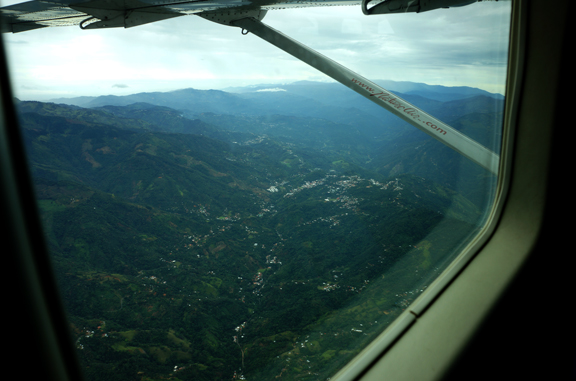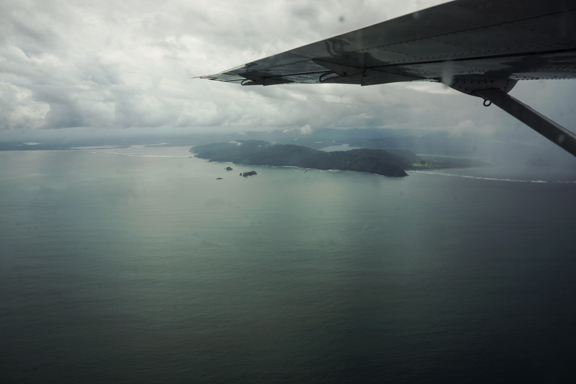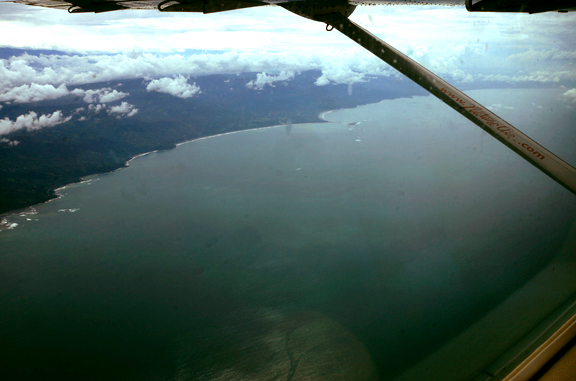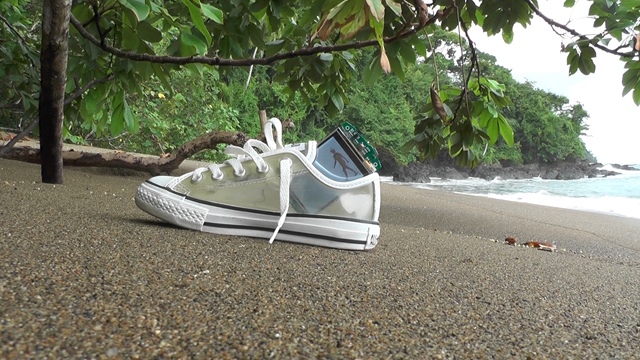


 |
 |
 |
Nature Air flies from San Jose to Bahia Drake, Corcovado. The plane holds 19 people maximum and lands on a dirt strip which stretches from the ocean into the jungle.
A torrential downpour greets the arrivals who huddle under the corrugated steel roofed hut waiting for the arrival of the pickup truck which will
drive them through a waist deep river before depositing each person at his or her hotel.
Bahia Drake on the Oso Peninsula in southwest Costa Rica is named after Sir Francis Drake and his purported visit to these isolated beaches in the 16th century. Drake was attempting to sail around the world when in 1577 he landed on the coast of what is now Costa Rica. Eventually he would head north and name another Drake's Bay north of what would become San Francisco, California.
A 4.3" iView tablet has been taken out of it's case and placed in a clear plastic converse tennis shoe. The iView tablet is android based, has an internal battery and small storage capacity.
The video playing on the tablet is the animation of a young woman walking on the promenade at Riis Beach in Queens, wearing a hat, bikini and sandals. She is on her way to the women's
bathroom. The figure of the woman in a bikini has been cut out from its original background which has been replaced with a solid white background creating
the animation. The converse sits on the sand of a small beach carved from the rocks of a cove facing the Pacific Ocean.

Bahia Drake is accessible by air and boat. The beaches are a short walk from the town of Bahia Drake. A trail leads from Colorada Beach around the peninsula through several expensive hotels and then into the jungle. Eventually the trail skirts several granular sandy alcove beaches. The jungle is home to Macaws, Toucans, Spider Monkeys, white-nosed Coati and many more. Squadrons of Macaws fly over the hotel Cabinas Manolo whose primary patrons are young Spaniards who are visiting the Corcovado ecoforest. The Macaws fly in pairs which multiply into phalanxes of gaudy noisy missiles. The beach trail ends at the Rio Claro River where it dumps into the ocean. Young Costa Ricans surf in the substantial waves off this beach.
